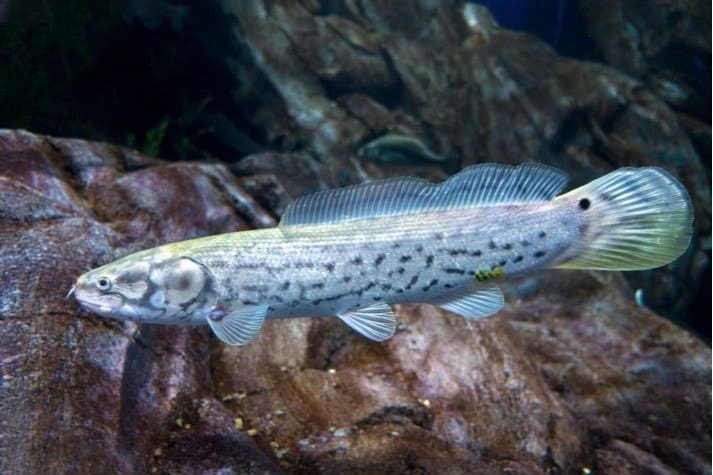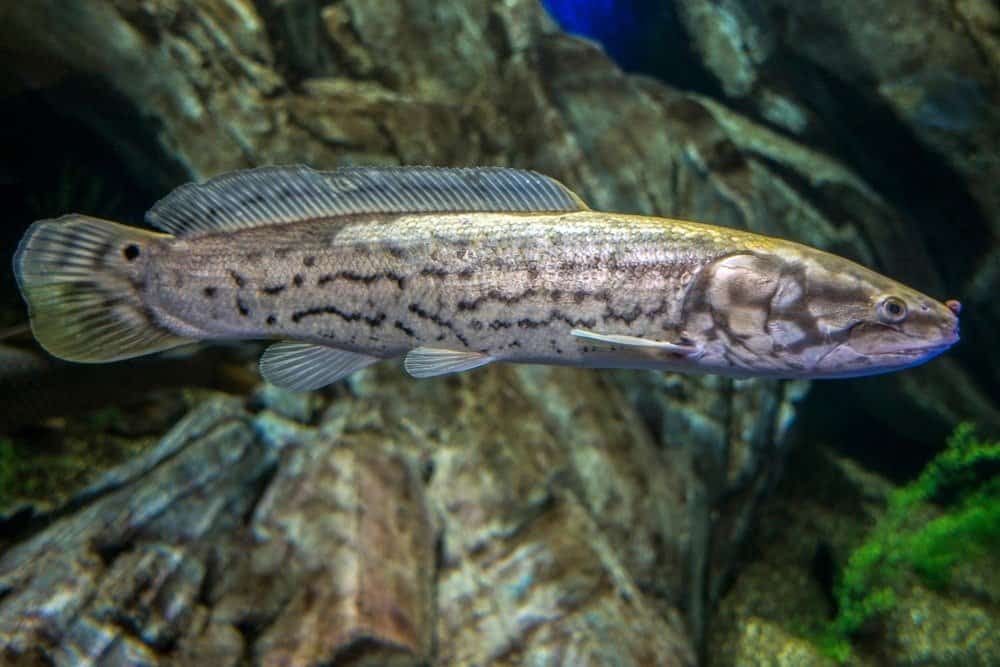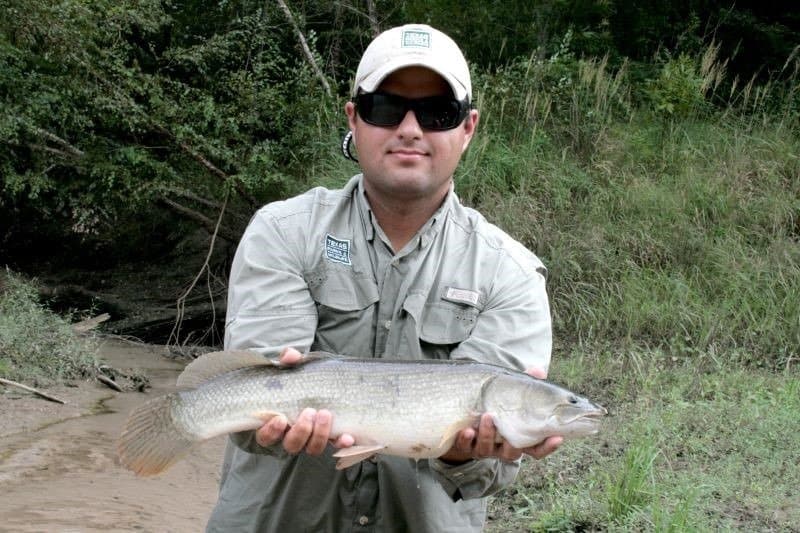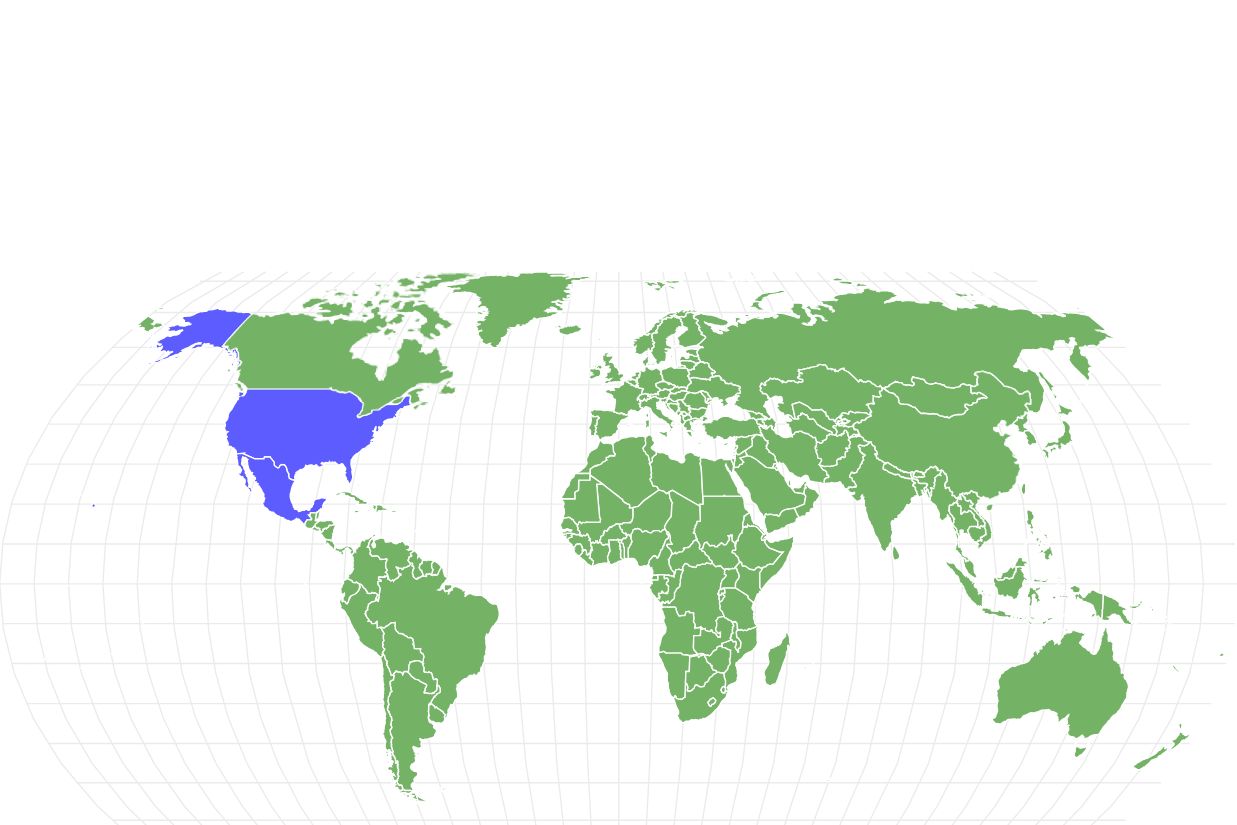Bowfin
Amia calva
The bowfin is a primitive fish that first evolved in the Jurassic
Advertisement
Bowfin Scientific Classification
- Kingdom
- Animalia
- Phylum
- Chordata
- Class
- Actinopterygii
- Order
- Amiiformes
- Family
- Amiidae
- Genus
- Amia
- Scientific Name
- Amia calva
Read our Complete Guide to Classification of Animals.
Bowfin Conservation Status
Bowfin Facts
- Prey
- Crustaceans, insects, amphibians, and other fish
- Group Behavior
- Solitary
- Fun Fact
- The bowfin is a primitive fish that first evolved in the Jurassic
- Estimated Population Size
- Unknown
- Biggest Threat
- Loss of habitat
- Most Distinctive Feature
- Eyespot
- Other Name(s)
- Mudpike, mudfish, dogfish, grinnel fish, and swamp trout
- Gestation Period
- 8-10 days
- Optimum pH Level
- 6-7.5
- Habitat
- Lakes, ponds, wetlands, rivers, and streams
- Predators
- Alligators, other bowfins, and humans
- Diet
- Carnivore
- Type
- Ray-finned fish
- Common Name
- Bowfin
- Number Of Species
- 1
View all of the Bowfin images!

The bowfin fish is a large and tenacious predator that lurks within America’s freshwater bodies, gobbling up smaller prey that passes by.
The modern bowfin species descends from an ancient line of fish that dates back to the Jurassic period some 145 to 200 million years ago. It is sometimes called a “primitive fish” or “living fossil” because it has changed relatively little compared to its ancestors many millions of years ago, but this in fact a modern species.
4 Incredible Bowfin Facts!

Bowfin fish devote a significant portion of their day to foraging for sustenance, yet they possess the ability to endure prolonged periods without consuming food.
©Stan Shebs, CC BY-SA 3.0 – License
- Like many ancient fish, the bowfin is an air-breathing species that must return to the surface periodically to take in oxygen. The large swimming bladder, which doubles as a lung, runs the entire length of the body. The gills are also heavily modified so that they do not collapse upon exposure to air. This is a good adaptation for oxygen-poor water.
- It is believed that the bowfin fish relies as much on its scent as its sight.
- Bowfin fish spend the majority of the day simply searching for food, but they can go a long time without eating.
- The bowfin goes by a variety of different regional names. Mudfish, mud pike, and grindle or grinnel fish are common names in the Southern United States.
Classification and Scientific Name

The bowfin is scientifically known as Amia calva, although the term “Amia” seems to denote a Greek name associated with a different fish species unrelated to the bowfin.
©Miroslav Halama/Shutterstock.com
The scientific name of the bowfin is Amia calva. Amia appears to be the Greek name for an unknown fish unrelated to the bowfin. Calva appears to derive from the Latin word for scalp or skull, or alternatively smooth, perhaps referring to the bowfin’s unusual scale-less head.
The bowfin is the only currently living member of its entire genus, family, and order. Many other species are known from the fossil record, but they appear to have gone extinct a long time ago.
Bowfin vs. Snakehead
The bowfin fish and snakehead are often mistaken for each other because they bear remarkable similarities in appearance, but they are actually part of entirely separate and barely related orders. If it has a narrow head and a very long anal fin near the back underside, then it’s probably a snakehead.
Evolution and Origins
The bowfin (Amia calva) is a ray-finned fish species endemic to North America, commonly referred to as freshwater dogfish, grinnel, or mud pike. It stands as an intriguing evolutionary puzzle due to its exceptional blend of primitive and advanced characteristics found in fish.
The bowfin fish exhibits unique adaptations in its respiratory system, with a sizable swim bladder that functions as a lung, extending along the entire length of its body.
Additionally, the fish’s gills have undergone significant modifications to prevent collapse when exposed to air, which proves advantageous in oxygen-depleted aquatic environments.
It is believed that the bowfin relies on both its sense of smell and vision as equally important senses for survival.
Appearance

The bowfin fish displays a distinctive pattern of mottled green and brown hues, transitioning to a yellowish shade on its belly, with the added feature of a prominent black spot near its tail, which potentially serves as a visual diversion to distract other animals.
©Miroslav Halama/Shutterstock.com
The bowfin fish is characterized by a mottled green and brown appearance (becoming almost yellow near the belly) and a black spot near that tail that might serve the purpose of distracting other animals.
The dorsal fin, which covers almost half the back with 46 to 50 soft undulating rays, gives this fish its common name. It also has a pair of pectoral fins near the head, a pair of pelvic fins around the mid part of the lower body, and a short anal fin near the back. The skull is composed of two different layers, one on top of the other for extra protection, and contains large teeth.
The bowfin has a comparatively long body. From head to fin, it measures 20 or 30 inches long and weighs around 4 to 10 pounds. The largest specimen ever recorded had grown up to 43 inches and some 21 pounds. The male of this species is generally smaller than the female and has an orange circle around its black tail spot.
Distribution, Population, and Habitat

The bowfin fish occupies an expansive geographic range across America, spanning from the northern Great Lakes region to the southern reaches of the Gulf of Mexico.
©Clinton & Charles Robertson from RAF Lakenheath, UK & San Marcos, TX, USA & UK / CC BY 2.0 – License
The bowfin inhabits a large range in America that extends between the Great Lakes in the north and the Gulf of Mexico in the south (with the exception of the Appalachian Mountains). It prefers temperate lakes, ponds, rivers, wetlands, and streams: almost anywhere with a sufficient amount of prey to eat and space to roam.
This species is currently in no danger of extinction. The IUCN Red List classifies the bowfin as a species of least concern. Some local bowfin populations might be dwindling due to the continued loss of wetlands in the United States, but otherwise, population numbers appear to be quite stable.
Predators and Prey
The bowfin is an apex predator that occupies the top of the food chain in almost every ecosystem it inhabits. It hunts in different locations throughout the day, moving from deep water during the daytime to shallower water at night.
What does the bowfin eat?
The bowfin is a slow but highly aggressive ambush predator that waits patiently in the shadows to stalk and then strike out at its quarry. This species consumes a wide variety of crustaceans, insects, amphibians, and other fish, including bowfins. The rapid motion of its mouth provides enough suction to easily capture and suck in prey.
What eats the bowfin?
Due to its size and aggressiveness, an adult bowfin has few natural predators besides other bowfins and perhaps alligators where their range overlaps. Juvenile bowfins often fall prey before they have a chance to fully grow. Humans do capture bowfins but not in particularly large quantities compared to most game fish.
Reproduction and Lifespan

The reproductive behavior of the bowfin fish sets it apart from the majority of other fish species in several notable ways.
©IrinaK/Shutterstock.com
Bowfins are solitary species at every time of the year except for the spawning season. At some point between late April and early June (depending on location), the male travels to shallow water and creates a nest by clearing away the vegetation to attract an appropriate female.
Once she’s found her mate, the female then deposits her eggs in the small depression of mud in the nest, and the male releases his sperm to fertilize them. A single nest can contain eggs from multiple females, many of them at different stages of development.
The bowfin’s reproductive behavior differs in many respects from most other fish species. First, it actually invests some time into caring for the young. Second, it’s the male rather than the female who’s responsible for the bulk of the parenting duties. Their duties usually consist of nothing more than watching over the newly hatched young, which make a tempting meal for other bowfins.
Also, because the sex ratio is heavily tilted toward males (there are some three males for every female), they can be quite aggressive toward each other in the competition for mates. A reproductively successful male needs to be very aggressive about guarding the nest.
The bowfin eggs have a short hatching time of only eight to 10 days after fertilization. The young tadpole-like larvae have an adhesive organ on the snout that attaches to the nest. After about seven to 10 days, the young will finish absorbing the entire yolk into their bodies and then leave the nest for good. Once independent, they will then graduate to eating small insects such as water fleas. At around four inches in length, the bulk of their diet consists largely of other fish.
It takes about three to five years for the bowfin to reach sexual maturity. The average life expectancy is 10 to 12 years in the wild, but some specimens have lived up to 30 years in captivity.
Fishing and Cooking
Due to their pasty texture and bland taste, the bowfin is largely considered to be inferior to most game fish by the majority of fishers. Their eggs are sometimes caught and sold as a less expensive alternative to caviar, but otherwise, they are mostly caught for sport and entertainment purposes by recreational fishers. One of the more appealing qualities of the bowfin is that they put up a great fight once hooked.
View all 285 animals that start with BBowfin FAQs (Frequently Asked Questions)
What is a bowfin fish?
The bowfin is a type of freshwater ray-finned fish with sharp teeth and a long body. The ancient lineage, which dates back nearly 200 million years, can be seen in several ancient features, including the skull. Amazingly, the bowfin is the only living member of its order, so there is nothing else quite like it on the planet. Alternative names for this species include the mudfish, mud pike, or grinnel fish.
What does bowfin eat?
Bowfins eat frogs, sunfish, crayfish, bass, and even other bowfins. Basically, they will consume almost any source of meat they can.
Do bowfin fish have teeth?
Bowfins have sharp cone-like teeth that allow them to consume large aquatic animals.
Are bowfin good to eat?
A lot of people complain that the bowfin meat is bland and unappetizing, but it can be fried, smoked, or stewed to enhance the taste.
How big does a bowfin get?
Bowfins can reach up to 43 inches and about 21 pounds, but the typical size of the bowfin is probably less than half that.
What Kingdom do Bowfins belong to?
Bowfins belong to the Kingdom Animalia.
How do Bowfins have babies?
Bowfins lay eggs.
What are the key differences between the burbot and the bowfin?
The key differences between the burbot and the bowfin are size, appearance, diet, and habitat. Other differences include predators and geographic location.
Thank you for reading! Have some feedback for us? Contact the AZ Animals editorial team.
Sources
- Animal Diversity Web, Available here: https://animaldiversity.org/accounts/Amia_calva/
- Texas Parks & Wildlife, Available here: https://tpwd.texas.gov/huntwild/wild/species/bowfin/

















